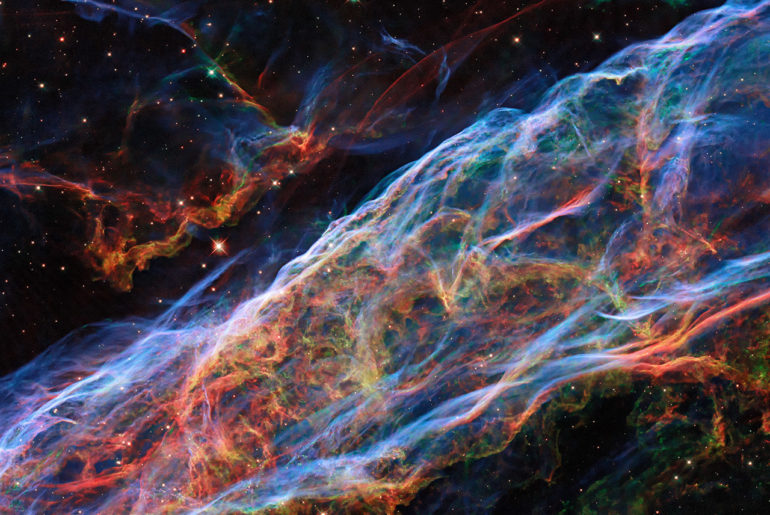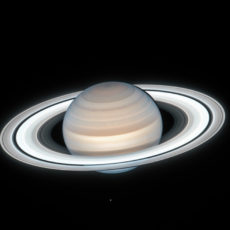
The NASA / ESA Hubble Space Telescope captured this surreal image of the Veil Nebula, and this updated version features new processing techniques that bring out fine details of uts delicate threads and filaments of ionized gas. This image was created using observations taken by Hubble’s Wide Field Camera 3 instrument using five different filters, while the new post-processing methods have further enhanced details of emissions from doubly ionized oxygen (blues), ionized hydrogen, as well as ionized nitrogen (reds).
The colorful Veil Nebula is situated approximately 2,100 light-years from Earth in the constellation of Cygnus (the Swan), making it a somewhat close neighbor in astronomical terms. Unfortunately, only a small portion of the nebula could be captured in this image.
- COMPUTERIZED STAR LOCATING TELESCOPE: The Celestron NexStar 127SLT offers a database of more than 40,000 stars, galaxies, nebulae, and more. Simply...
- MAKSUTOV-CASSEGRAIN OPTICAL DESIGN: With a large, 127mm aperture, the NexStar 127SLT can gather enough light to see our Solar System and beyond. View...
- COMPACT AND PORTABLE: The ideal telescope for adults and kids to use together, the NexStar 127SLT is compact, lightweight, and portable. It's easy to...
The Veil Nebula is the visible portion of the nearby Cygnus Loop, a supernova remnant formed roughly 10,000 years ago by the death of a massive star. That star – which was 20 times the mass of the Sun – lived fast and died young, ending its life in a cataclysmic release of energy. Despite this stellar violence, the shockwaves and debris from the supernova sculpted the Veil Nebula’s delicate tracery of ionized gas – creating a scene of surprising astronomical beauty,” according to NASA.






